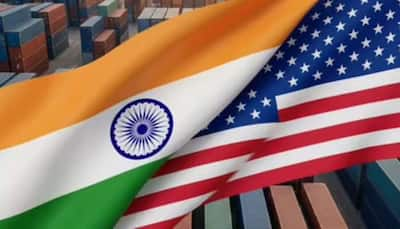World
India and US Finalize Trade Agreement, Tariffs Adjusted for Key Sectors

India and the United States are finalizing an interim trade agreement this week, marking a significant development in their economic relationship. This deal will reshape tariffs and trade practices in various sectors, including agriculture, processed foods, and industrial goods.
The agreement stipulates that Indian goods entering the United States will face an average tariff of 11.5%, while U.S. goods entering India will carry a 7% tariff. After months of negotiations, India has consented to reduce tariffs on specific U.S. agricultural imports, such as apples, blueberries, blackberries, and selected processed food items. Notably, India has firmly stated that there will be no provisions for genetically modified (GM) crops, citing domestic concerns and upcoming trade discussions with the European Union.
Tariff Structure and Market Implications
In addition to the tariff adjustments, India has rejected a blanket tariff approach on automobiles, opting instead for distinct categories based on vehicle type. Reports indicate that the United States has agreed to this proposal. However, the deal does not expand access to India’s dairy market, which the U.S. sought to open further. India has restricted the agreement to processed dairy items, emphasizing the need to protect small farmers and rural incomes from potential adverse effects.
The timing of this agreement is significant, as the U.S. is reevaluating its trade strategies with several countries. President Donald Trump recently announced increased tariffs on exports from various nations, including the European Union, Japan, and Mexico, effective from August 1, 2023. As a critical trade partner, India stands to benefit from this evolving landscape.
Potential Economic Benefits and Risks
A report from SBI Research highlights that India could gain substantially from this realignment. The study suggests that if India captures just 2% of the U.S. chemical import market, particularly in pharmaceuticals, it could add 0.2% to India’s GDP. Furthermore, enhancing its share in the U.S. apparel market by 5% could contribute an additional 0.1% to GDP.
India is also reviewing its Free Trade Agreement (FTA) with ASEAN countries to address tariff discrepancies and prevent significant dumping of goods from countries like China through its ASEAN partners. Nevertheless, the SBI report warns of potential dangers for the Indian dairy sector. If the market were opened to U.S. dairy imports, it could lead to a 15% decline in milk prices, resulting in an estimated income loss of Rs 1.03 lakh crore for farmers and a Rs 51,000 crore loss to India’s gross value added (GVA), significantly affecting rural employment.
Final negotiations on this interim trade deal are expected to conclude this week, with officials from India’s Ministry of Commerce and Industry already in Washington for the signing. This agreement is part of broader trade discussions that may continue in the coming months, indicating an ongoing commitment to strengthening trade relations between India and the United States.
-

 World5 months ago
World5 months agoSBI Announces QIP Floor Price at ₹811.05 Per Share
-

 Lifestyle5 months ago
Lifestyle5 months agoCept Unveils ₹3.1 Crore Urban Mobility Plan for Sustainable Growth
-

 Science5 months ago
Science5 months agoNew Blood Group Discovered in South Indian Woman at Rotary Centre
-

 World5 months ago
World5 months agoTorrential Rains Cause Flash Flooding in New York and New Jersey
-

 Top Stories5 months ago
Top Stories5 months agoKonkani Cultural Organisation to Host Pearl Jubilee in Abu Dhabi
-

 Sports5 months ago
Sports5 months agoBroad Advocates for Bowling Change Ahead of Final Test Against India
-

 Science5 months ago
Science5 months agoNothing Headphone 1 Review: A Bold Contender in Audio Design
-

 Top Stories5 months ago
Top Stories5 months agoAir India Crash Investigation Highlights Boeing Fuel Switch Concerns
-

 Business5 months ago
Business5 months agoIndian Stock Market Rebounds: Sensex and Nifty Rise After Four-Day Decline
-

 Sports5 months ago
Sports5 months agoCristian Totti Retires at 19: Pressure of Fame Takes Toll
-

 Politics5 months ago
Politics5 months agoAbandoned Doberman Finds New Home After Journey to Prague
-

 Top Stories5 months ago
Top Stories5 months agoPatna Bank Manager Abhishek Varun Found Dead in Well









